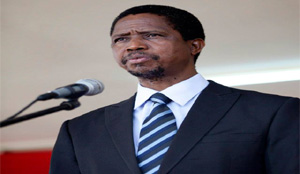THE resumption of financial support to Zambia by Sweden after six years of aid freeze shows the level of confidence the donors have in President Edgar Lungu’s administration.
This important development partner certainly believes in President Lungu’s watch on taxpayers’ money, and feels that local or donor aid-related funds shall no longer be misapplied.
Of course the assistance from the Swedish government is being extended to Zambia jointly with the Department for International Development of the United Kingdom.
The development is indeed a great relief to the Zambian Government as it continues to bring quality healthcare services as close to the communities as possible, as enshrined in the Health Policy as well as the Patriotic Front (PF) manifesto.
In 2009, the Scandinavian country, which was the major supporter of Zambia’s health system, stopped funding to the sector after 500 million Swedish Kroners was misappropriated by Ministry of Health officials.
The money was misappropriated during the MMD regime but when the Patriotic Front came into power in 2011, it prioritised formulation of a National Health Policy and Strategic Plan to ensure clear direction the health sector would take.
Results of these efforts have since begun to show as seen from partners like the Swedes who have resumed providing financial support to Zambia.
Surely, Sweden’s release of US$47.3 million (400 million Swedish Kroners) over a period of four years from 2015 to 2019 is a major boost to Zambia’s health sector.
Under this financing agreement, Zambia would receive an initial 69 million Swedish Kroners for programmes aimed at fighting under-five deaths and women dying during pregnancy, among other reproductive health challenges.
The money will compliment the existing Zambian Health-funded projects and significantly reduce mortality rates among mothers and children.
The fresh capital injection, which is aimed at funding projects to increase access to reproductive, maternal, neo-natal, child and adolescent health, would further reduce the deaths of women during pregnancy, as well as child deaths at birth.
What is equally pleasing is that Zambia has already recorded reductions in women dying during pregnancy, which is scientifically known as maternal mortality, and child deaths, according to the 2013-2014 Demographic Health Survey.
The maternal mortality ratio now stands at 398 deaths per 100,000 live births from 591.
Similarly, there has been significant reduction in fewer-than-five deaths from 95 per 1,000 live births in 2002 to 70 per 1,000 live births in 2007 while under five death rate has decreased from 168 per 1,000 live births in 2002 to 119 per 1,000 in 2007.
These reductions have been attributed to many factors, among them, good leadership, more investment in equipment and health infrastructure.
Therefore, with development partners getting back on board, coupled with increased funding to projects related to reproductive health as well as the revised Health Policy and Strategic Plan, Zambians should expect further reduction in expecting mothers dying during pregnancy as well as under-fives deaths.
It is worth noting that Sweden in particular is also currently reviewing various assessments to ensure that its aid to Zambia works well for both this country and the Nordic State as a key partner.
From this positive development, we commend President Lungu for continuously raising Zambia’s profile on the international scene from the time he was elected as Republican President because results are beginning to show.







